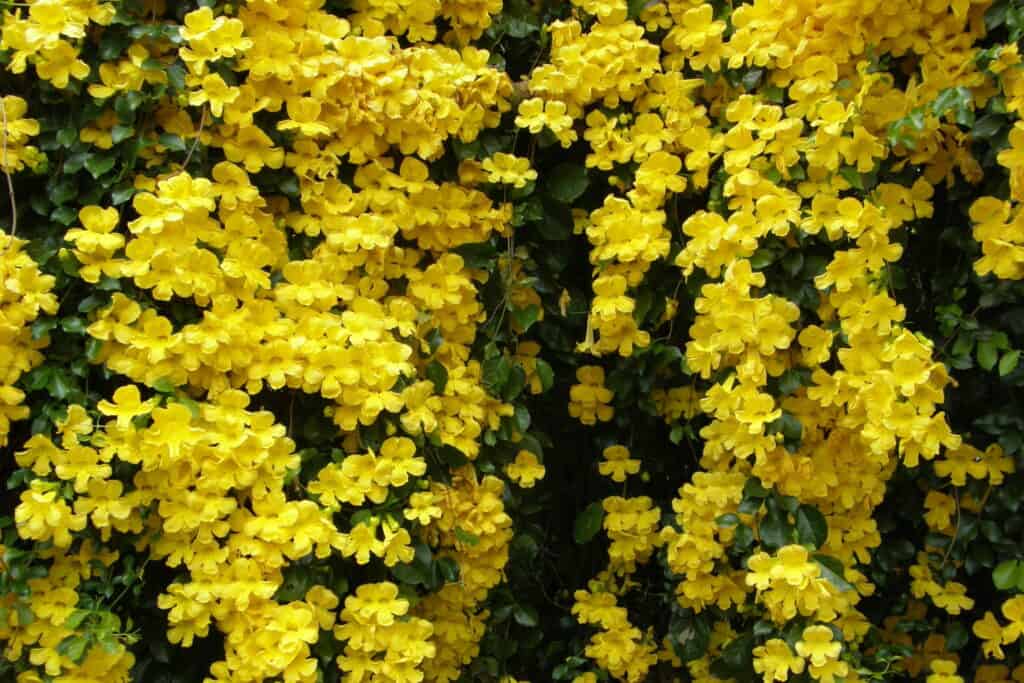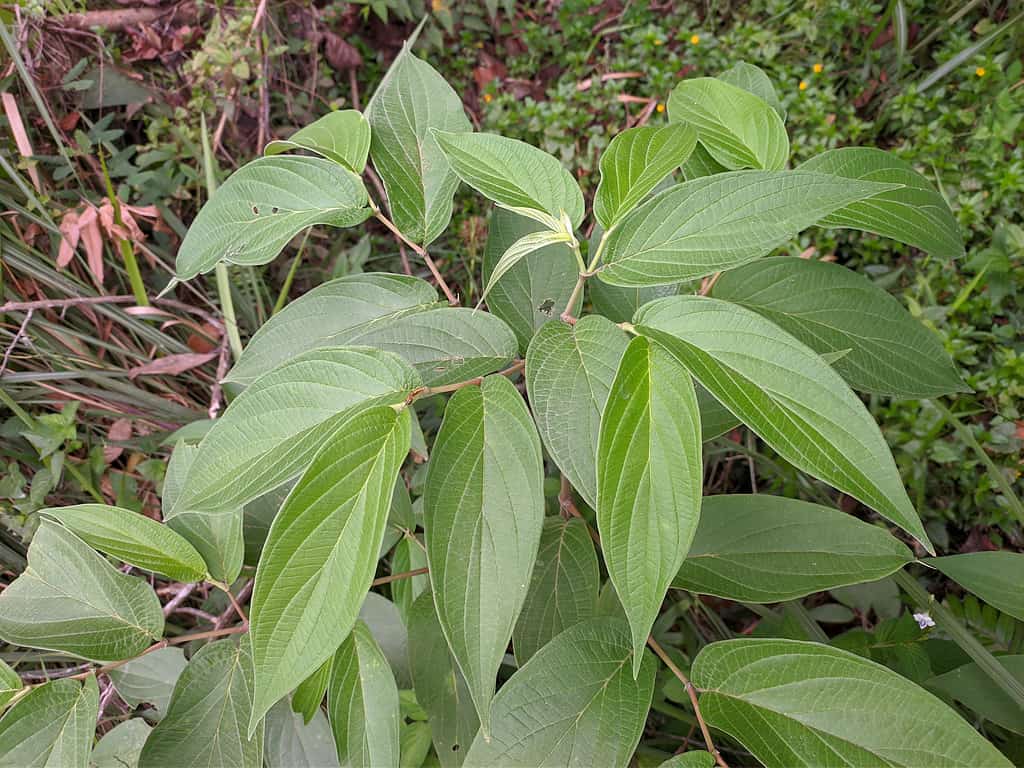Guyana is a beautiful and small country in South America. The country has a long history, but it gained its independence in 1966 and became a republic on 23 February 1970. This stunning country has unique animals, plants, and geography. The country is mountainous but has clay regions, hillsides, rainforests, and dry savannahs. Before the colonial period and colonization, native indigenous tribes lived and thrived within the country. They ate delicious and nutritious vegetables. Are you curious about the various vegetables native to Guyana? Take a look at this preview, then read on for details:

Listed below are three vegetables native to Guyana and many more fruits. Many of the fruits on this list are sometimes called vegetables, although they develop from flowering plants.
Cassava
One of the most common native vegetables in Guyana is cassava, a delicious root native to South America. It is also called yuca or manioc. This starchy root has a high amount of carbs. Cassava plants are tall with vivid green leaves. Although the leaves of this plant are edible, most people eat the cassava root. The root is long with a woody outer layer. The inside of the cassava is yellow or white. Humans have been eating cassava for at least 10,000 years. In a 1,400-year-old Maya site, Joya de Cerén, in El Salvador, experts found evidence of the oldest cassava cultivation. Although cassava is a common vegetable in Guyana, it does contain toxins. You should never eat the plant raw since it contains two cyanogenic glucosides, linamarin, and lotaustralin. While you can eat this vegetable boiled and mashed, in Guyana, you can also drink kasiri, a cassava beer.

One of the most common native vegetables in Guyana is cassava, a delicious root native to South America.
©CHOTE BKK/Shutterstock.com
Amaranth
Another common native vegetable in Guyana is Amanarth. Amaranth is a genus of plants with large edible leaves. The leaves are considered vegetables and are used in many traditional recipes. There are at least 75 recognized species in this genus. The origin of amaranths is hard to pinpoint, but evidence suggests they share an ancestor, A. hypochondriacus. Although A. hypochondriacus is endemic to Mexico, it was likely domesticated in South America and Central America. In Guyana, a popular dish called Callaloo uses various leafy greens, including amaranth. However, sometimes taro leaves are used. Every country has its variation. This dish is also very popular in Jamaica.

Another common native vegetable in Guyana is Amanarth, a genus of plants with large edible leaves.
©Anna Gratys/Shutterstock.com
Sweet Potatoes
Did you know sweet potatoes are native to tropical South America? Sweet potatoes have been an important part of the diets of many Central and South Americans for at least 5,000 years. Sweet potatoes are starchy sweet root vegetables with beautiful and vibrant green vines. You can eat the leaves as greens. Interestingly, although potatoes and sweet potatoes are related, it’s distant. Although sweet potatoes are either native to Central or South America, they spread throughout the Caribbean and South America by 2500 BCE. The closest wild relative of the sweet potato is Ipomoea trifida. Sweet potatoes need a lot of rain to grow quickly and mature within 2 to 5 months. They also thrive in warm conditions at an average temperature of 75°F. Sweet potatoes are packed with nutrients, containing Vitamin A, Vitamin C, manganese, and Vitamin B6.

Sweet potatoes are starchy sweet root vegetables with beautiful and vibrant green vines.
©Angelika Heine/Shutterstock.com
Other Amazing Native Guyana Fruits and Plants
Although Guyana doesn’t have many native vegetables, there are many edible plants. Listed below are some of the most amazing native Guyana fruits and plants.
The Brazil Nut (Bertholletia excelsa)
Despite its name, the Brazil nut is not only native to Brazil, but also to eastern Colombia, Venezuela, eastern Peru, the Guianas, and eastern Bolivia. The Brazil nut is a large and tall tree, reaching up to 164 feet. Its trunk diameter can be about 6 feet and 7 inches. This tree also has a long lifespan, typically reaching 500 years old. However, some experts have recorded 1,000-year-old Brazil nut trees. The fruit of these trees is also large and is known to cause harm to cars. It’s not a good idea to stand underneath a Brazil nut tree with fruit as the fruit falls when it ripens, potentially causing traumatic brain injuries. Brazil nuts are edible, but they are also made into nut oil. Sometimes, nut oil is used as a lubricant in clocks. Many dishes also use Brazil nuts, including Brazilian nut cake.

Brazil nuts are edible and rich in selenium.
©iStock.com/Paralaxis
Cat’s Claw (Uncaria tomentosa)
Next, we have the cat’s claw, a woody vine native to the tropical jungles of South and Central America. It’s named for its cat claw-like thorns. The plants climb high, reaching lengths up to 100 feet using their hook-like thorns. Cat’s claws have been used in traditional medicine in South America for thousands of years. However, no data has yet to prove the plant’s effectiveness.

Cat’s claw flowers.
©poomooq/Shutterstock.com
Spiked Pepper (Piper aduncum)
Spiked peppers are unique flowering plants in the family of Piperaceae. They are best known for their fragrance since they smell like peppers. Spiked pepper plants grow abundantly in the wild, specifically on the coasts and in the forests of Central and South America. You can also find this unique plant in the Interandean Valley. Interestingly, spiked pepper fruits are sometimes used to add flavor to cocoa. In addition, this beautiful tree was used in traditional medicine to treat ulcers. Although only native to South America, the Caribbean, and Central America, you can find this plant growing in Florida, Puerto Rico, Polynesia, and Hawaii.

Spiked peppers are unique flowering plants in the family of
Piperaceae. They are best known for their fragrance since they smell like peppers.
©iStock.com/Sarno Markosasi
Summary of Native Guyana Plants:
| Name of Plant | Type of plant | Location | Uses |
|---|---|---|---|
| Cassava | Root Vegetable | South America | Used as a cooked food |
| Amaranth | Leafy Plant | Central & South America & Mexico | Used for food. |
| Sweet Potato | Root Vegetable | Central & South America or any tropical or warm temperate climate | Used for food. |
| Brazil Nut | Tree | Brazil, Columbia, Venezuela, Peru, Guianas, & Bolivia | The fruit is eaten as a nut or made into nut oil for lubrication. |
| Cat’s Claw | Woody Vine | Central & South America | Used in traditional medicines. |
| Spiked Pepper | Flowering Plant | Native to Central & South America & Caribbean; found in Florida, Puerto Rico, Polynesia, & Hawaii | Fruits are used for flavoring; Leaves are used for ulcer medicine. |
The photo featured at the top of this post is © iStock.com/Koval Nadiya
Thank you for reading! Have some feedback for us? Contact the AZ Animals editorial team.






